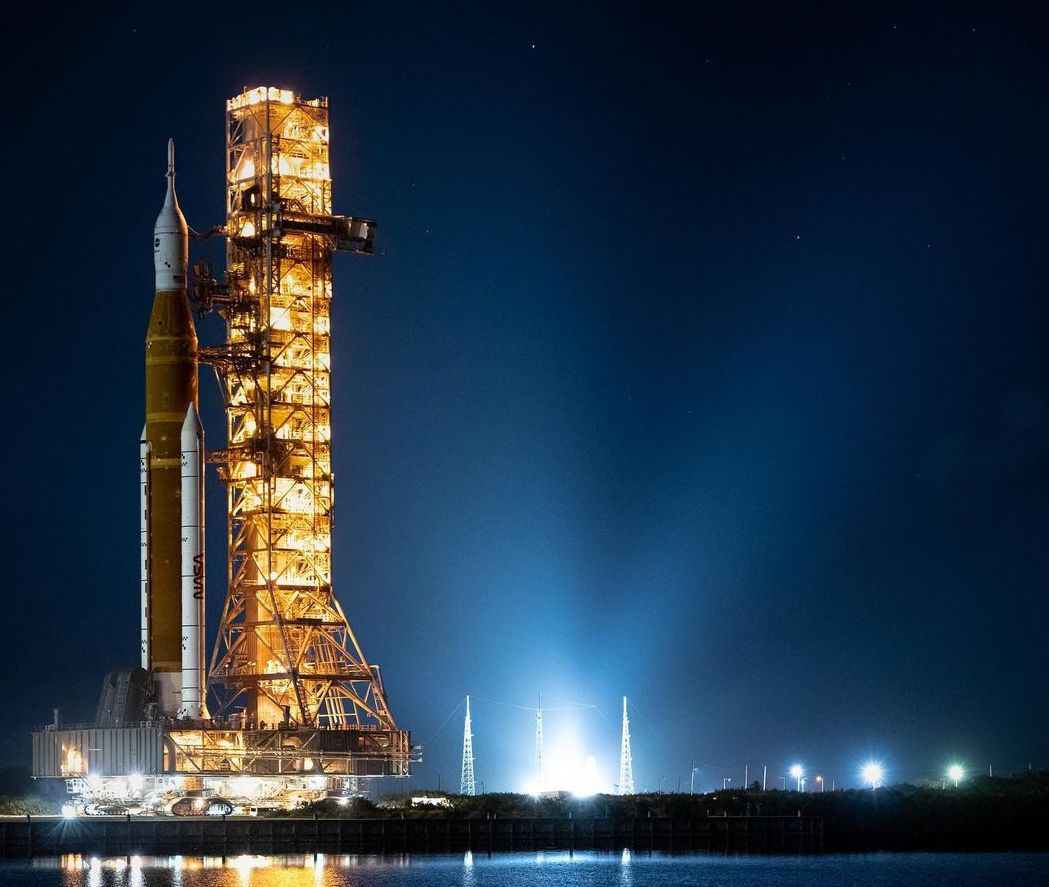The launch of the Artemis I mission to the Moon, which was supposed to begin the long-awaited flight of the NASA SLS rocket on November 14, was again in jeopardy. A powerful storm called “Nicole” is approaching Florida, where a megaracket is located on launch pad 39B at the Kennedy Space Center, which can bring potentially destructive winds with it.

Now “Nicole” is a tropical storm, which is likely to acquire hurricane status when it approaches the coast of Florida. The rocket is designed to withstand winds of 137 km/h while on the pad. It is possible that the storm may bring winds exceeding this limit, but the exact path of the storm and its possible strength are still unknown. NASA said it is now monitoring the storm and preparing for its arrival.
Risky decision
A Tuesday morning report from the National Hurricane Watch Center said that “Nicole” will approach the Florida coast on Wednesday. A hurricane warning is in effect in some areas.
10 am EST: #Nicole expected to strengthen. Hurricane Warning has been issued for portions of the east coast of Florida. See Key Messages below and visit https://hurricanes.gov/ for details. pic.twitter.com/UlhlJ5zcjc
— National Hurricane Center (@NHC_Atlantic) November 8, 2022
NASA has called for Artemis I to be left on site in the hope of reaching the expected launch window on November 14. It may take several days for the rocket to return to the garage, so it looks like the SLS and Orion will have to withstand the impact of the storm. The monitoring group estimated the cost of one Artemis launch at about USD 4.1 billion, so leaving the rocket in the open in a strong hurricane is an expensive gamble.
Flight disruption due to the September hurricane
Last week, NASA returned a massive Space Launch System (SLS) rocket with an Orion spacecraft capsule on top back to the launch pad. Earlier, the rocket was hidden in a giant storage hangar during Hurricane Ian at the end of September.
Artemis I is the first big step in NASA’s attempt to bring people back to the surface of the Moon. There will be no astronauts aboard Orion during the first flight. But the space agency wants to show that the rocket system and spacecraft are ready to safely deliver people to our lunar neighbor.
Earlier we reported on the TOP 5 interesting facts about the NASA SLS rocket.
Follow us on Twitter to get the most interesting space news in time
https://twitter.com/ust_magazine

